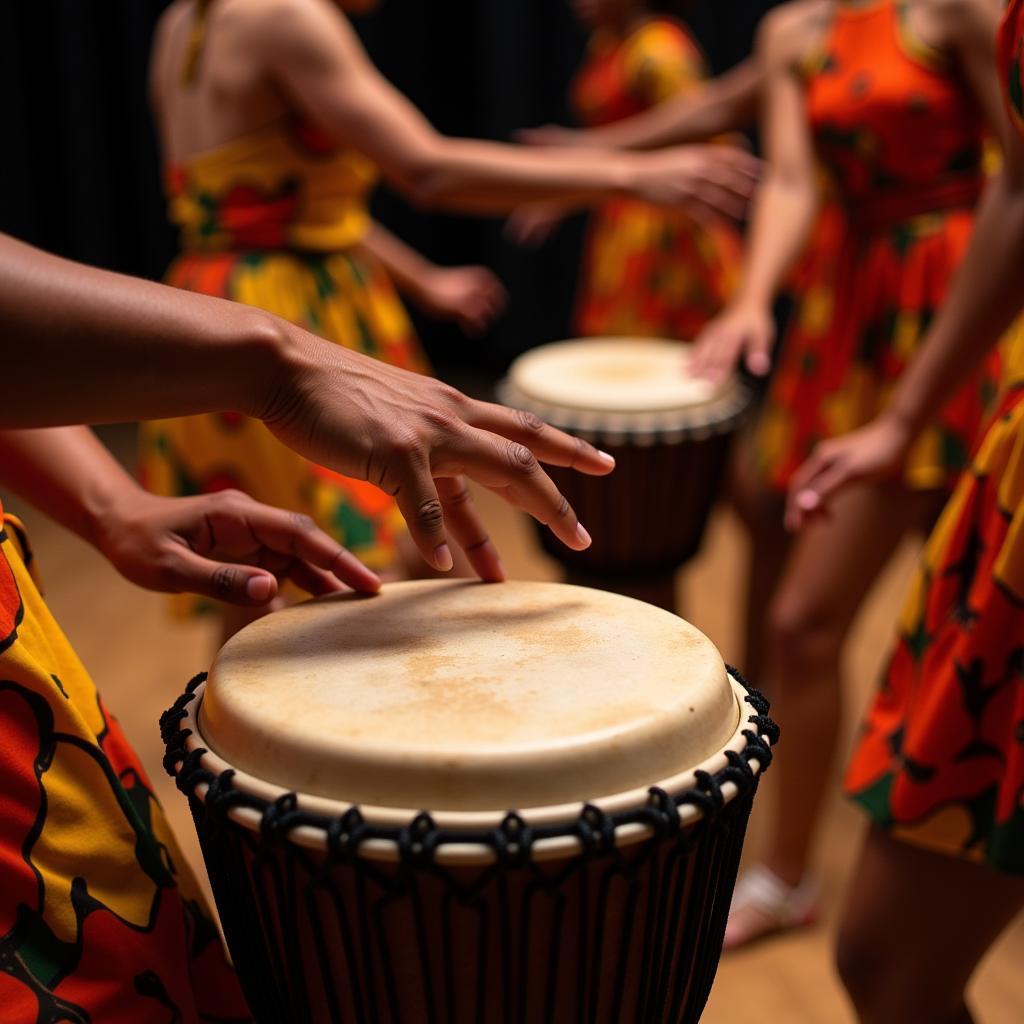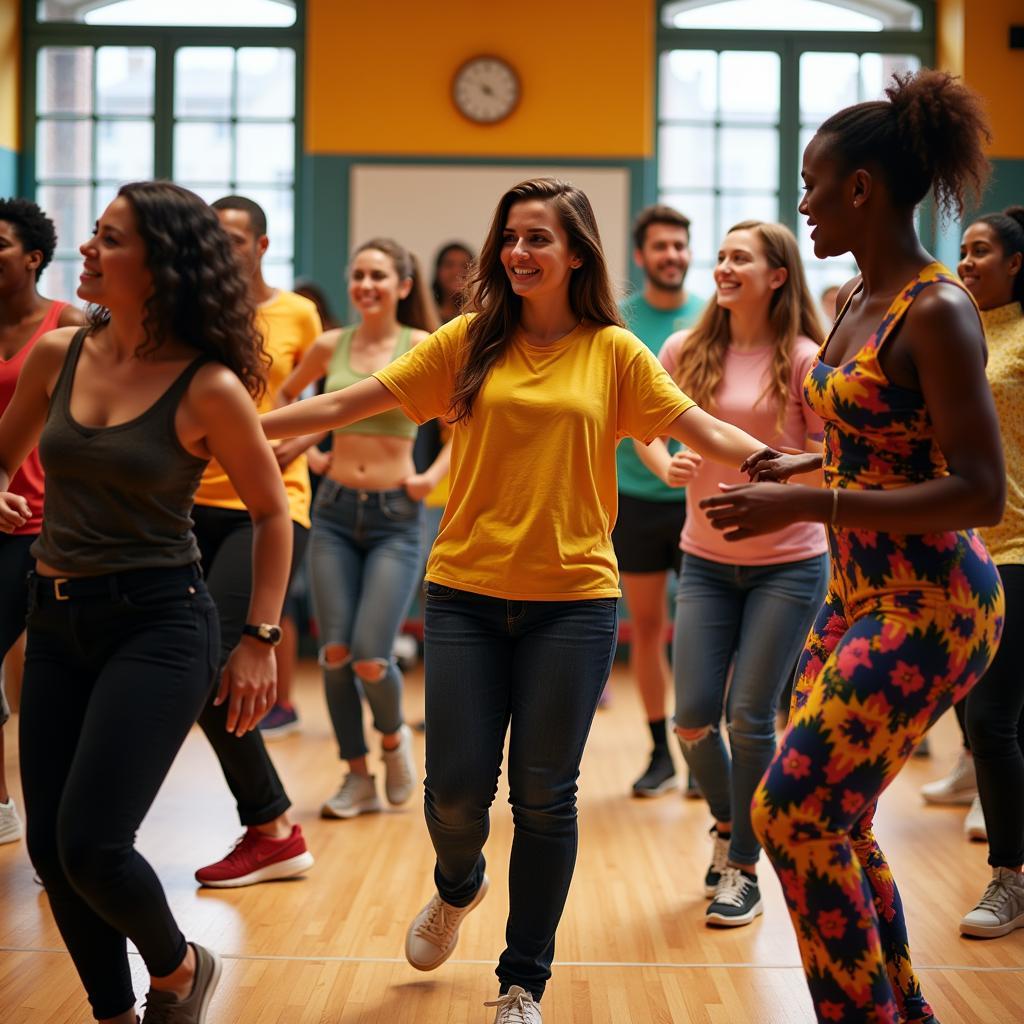The Rhythmic Heart of Africa: Exploring African Dances and the Djembe
African dances and the djembe drum are inextricably linked, forming a vibrant tapestry of cultural expression that pulsates through the heart of the continent. From celebratory rituals to storytelling traditions, African dances and the djembe create a powerful connection between music, movement, and community. This exploration delves into the rich history and diverse forms of African dances, focusing on the pivotal role of the djembe in shaping these captivating art forms. african folk dance for children's choirs
The Djembe: More Than Just a Drum
The djembe, a rope-tuned goblet drum carved from a single piece of hardwood, is more than just an instrument; it’s a voice. Its deep, resonant bass tones and sharp, high-pitched slaps mimic the rhythms of life, echoing everything from the gentle patter of rain to the thunderous roar of a lion. The djembe’s versatility allows it to create complex polyrhythms, driving the energy of African dances and captivating audiences worldwide.
What makes the djembe unique? Its ability to produce a wide range of sounds, from deep bass to crisp slaps, allows for intricate rhythmic patterns that are integral to African dance.
 Djembe Drum in African Dance
Djembe Drum in African Dance
A Continent of Dance: Exploring Regional Styles
African dances are as diverse as the continent itself. Each region boasts unique styles, reflecting specific cultural traditions and historical narratives. From the energetic Sabar of Senegal, driven by the pulsating rhythms of the djembe, to the graceful Gumboot dances of South Africa, born from the hardship of miners, every dance tells a story. In East Africa, dances often incorporate acrobatic movements and high jumps, while West African dances emphasize grounded movements and intricate footwork. These variations highlight the rich tapestry of African culture.
West African Dance and the Djembe: A Symbiotic Relationship
West Africa, considered the birthplace of the djembe, exemplifies the symbiotic relationship between drum and dance. Dances like the Kuku, performed by the Baga people of Guinea, are characterized by powerful, percussive movements that mirror the djembe’s rhythms. The djembe isn’t just accompaniment; it’s the heartbeat of the dance, guiding the dancers’ movements and infusing the performance with raw energy.
What are some common West African dances that feature the djembe? Dances like the Kuku, Dununba, and Soli are just a few examples of the rich dance traditions that incorporate the djembe.
The Cultural Significance of African Dances
African dances are not merely forms of entertainment; they are integral to social life, serving various functions from celebrating harvests and births to mourning losses and honoring ancestors. They are a powerful means of communication, transmitting cultural values, historical narratives, and spiritual beliefs from one generation to the next. african culture youtube
Awa Thiam, a renowned Senegalese dancer, explains, “Dance in Africa is not just about movement; it’s about connecting with our ancestors, our community, and ourselves. It’s a living history, a vibrant expression of who we are.”
african art ideas for primary school
Learning the Rhythms: Experiencing African Dances
The beauty of African dances lies in their accessibility. Whether you’re a seasoned dancer or a complete beginner, the infectious rhythms and energetic movements are sure to captivate you. Many communities offer classes and workshops where you can learn the basics of djembe drumming and various African dance styles. These experiences offer a unique opportunity to immerse yourself in African culture and connect with the rich heritage of these art forms.
The Power of the Djembe and African Dances: A Global Phenomenon
The infectious rhythms of the djembe and the vibrant energy of African dances have captivated audiences worldwide. From concert halls to community centers, these art forms continue to gain popularity, bridging cultural gaps and inspiring people across the globe. The djembe and African dances are not just a celebration of African culture; they are a testament to the power of music and movement to unite us all. african xxxn african drum clipart
In conclusion, African dances and the djembe represent a powerful fusion of art, culture, and community. From their historical significance to their contemporary global appeal, these vibrant expressions of the human spirit continue to resonate with people worldwide. Exploring the world of African dances and the djembe is an enriching journey, offering a glimpse into the rhythmic heart of Africa.
When you need assistance, please contact us by phone: +255768904061, email: kaka.mag@gmail.com or visit us at: Mbarali DC Mawindi, Kangaga, Tanzania. Our customer service team is available 24/7.

